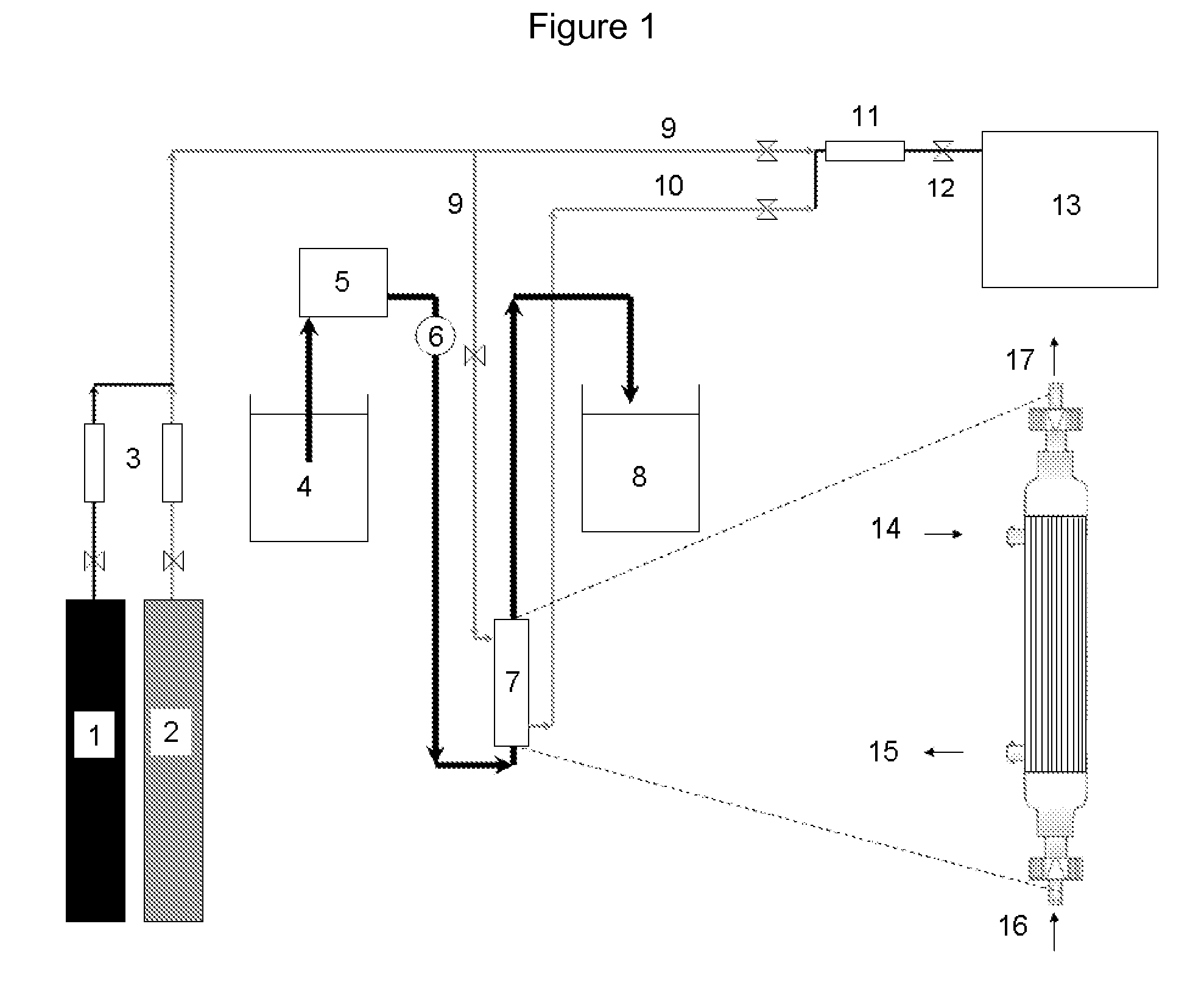Heat-Stable Carbonic Anhydrases and Their Use
a carbonic anhydrase, heat-stable technology, applied in the field of heat-stable carbonic anhydrase, can solve the problems of high energy consumption, economic and environmental problems, and high energy consumption, and achieve the effects of reducing the number of oxidized carbon dioxide atoms
- Summary
- Abstract
- Description
- Claims
- Application Information
AI Technical Summary
Benefits of technology
Problems solved by technology
Method used
Image
Examples
example 1
Cloning and Expression of B. clausii Carbonic Anhydrase in B. subtilis
[0136]Carbonic anhydrase sequences were identified by PCR screening on genomic DNA from different Bacillus clausii strains. Genomic DNA from the B. clausii strains was prepared by using the Qiagen Blood DNA kit following the manufacturer's protocol.
PCR Screening
[0137]PCR (1) was performed in a total volume of 50 microliters, the following reagents were added, 1 microliter of genomic DNA preparation (template), 10 pmol of each of the primers (Bcaf1 and Bcar1), dNTPs and Expand polymerase in buffer #1 (Roche). The PCR conditions were 94° C. for 2 min; 9 cycles of 94° C. for 15 sec; 55° C. for 45 sec; 68° C. for 1 min; followed by 68° C. for 10 min; 4° C. for 20 min and 15° C. until the end of the PCR program.
[0138]The primers used for the PCR screening were:
Bcaf1 gcttctgctgctagtttcctgtca (SEQ ID NO: 19)
Bcar1 ataatgaaaaccgatttctctgtcgc (SEQ ID NO: 20)
[0139]Obtained PCR products (SEQ ID NOs: 1, 3, 5, 7, 9, 11 and 13)...
example 2
Cloning of CA from B. halodurans
[0145]The CA from B. halodurans (SEQ ID NO: 16) was cloned according to Example 1 with the following modifications. No screening was performed. Instead, the genomic DNA of strain B. halodurans C-125 (JCM9153) was used as template and primers for PCR (2) were
cahTSP ctgcctcattctgcagccgcgccttccacagaaccagtcgat (SEQ ID NO: 23)
cahrev: tccgatccccttttccattctactctattcagtgatcacgtcat (SEQ ID NO: 24).
[0146]Due to the nature of primer cahTSP the translated amino acid sequence of this PCR (2) product was changed to LPHSAAAPSTEPVD . . . , where LPHSAAA represents a fragment of the amyL gene (see SOE fusion reaction below) and PSTEPVD represents the N-terminal of the mature peptide obtained by recombinant expression of the CAs. The final SOE PCR was done according to Example 1.
example 3
Enzyme Purification
[0147]Six recombinant carbonic anhydrases (SEQ ID NOs: 2, 8, 10, 12, and 14 (cloned as described in Example 1 and SEQ ID NO: 16 cloned as described in Example 2) were purified by the same identical procedure: The culture broth was centrifuged (26.000×g, 20 min) and the supernatant was filtered through a Whatman 0.45 micro-m filter. The 0.45 micro-m filtrate was approx. pH 7 and conductivity was approx. 20 mS / cm. The 0.45 micro-m filtrate was transferred to 10 mM HEPES / NaOH, pH 7.0 by G25 sephadex chromatography and applied to a 100 ml Q-sepharose FF column equilibrated in 10 mM HEPES / NaOH, pH 7.0. After washing the column with the equilibration buffer, bound protein was eluted with a linear NaCl gradient (0→0.5 M) over 3 column volumes. Fractions were collected during elution and these fractions were tested for carbonic anhydrase activity (see Example 4). Two peaks with CA activity were identified. N-terminal sequencing revealed that the first elution peak contain...
PUM
| Property | Measurement | Unit |
|---|---|---|
| Temperature | aaaaa | aaaaa |
| Temperature | aaaaa | aaaaa |
| Fraction | aaaaa | aaaaa |
Abstract
Description
Claims
Application Information
 Login to View More
Login to View More - R&D
- Intellectual Property
- Life Sciences
- Materials
- Tech Scout
- Unparalleled Data Quality
- Higher Quality Content
- 60% Fewer Hallucinations
Browse by: Latest US Patents, China's latest patents, Technical Efficacy Thesaurus, Application Domain, Technology Topic, Popular Technical Reports.
© 2025 PatSnap. All rights reserved.Legal|Privacy policy|Modern Slavery Act Transparency Statement|Sitemap|About US| Contact US: help@patsnap.com


